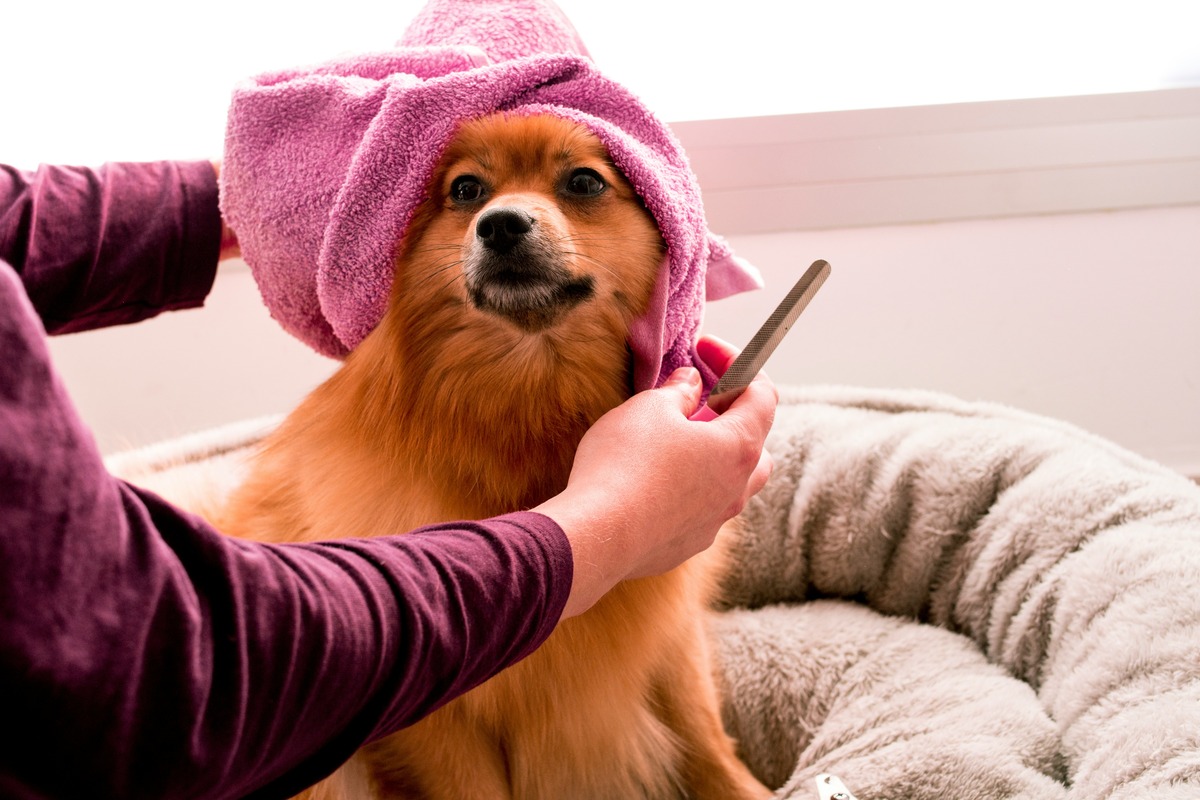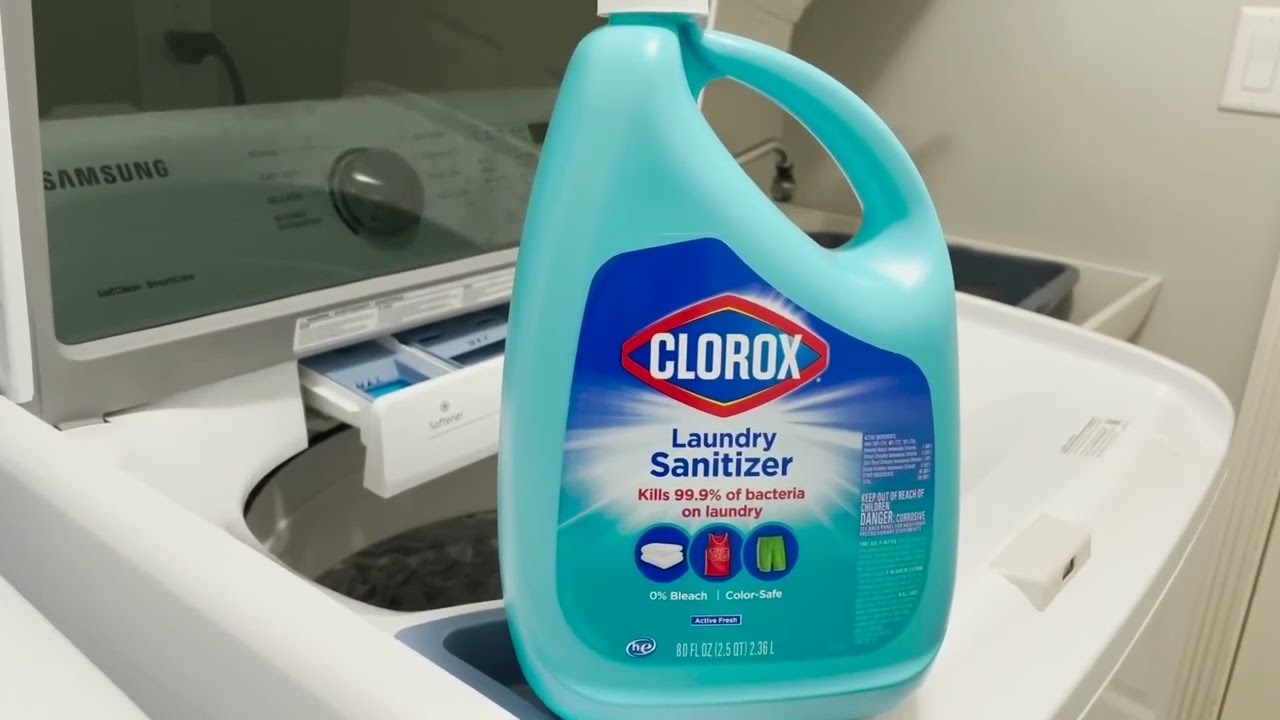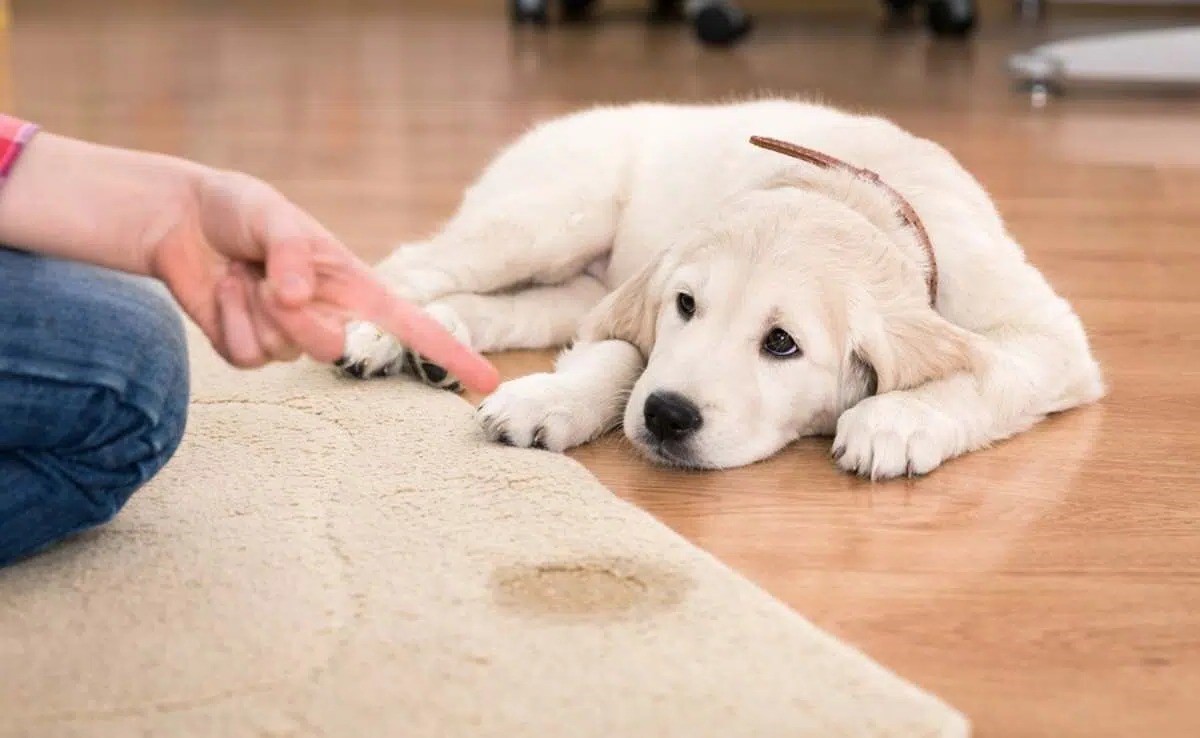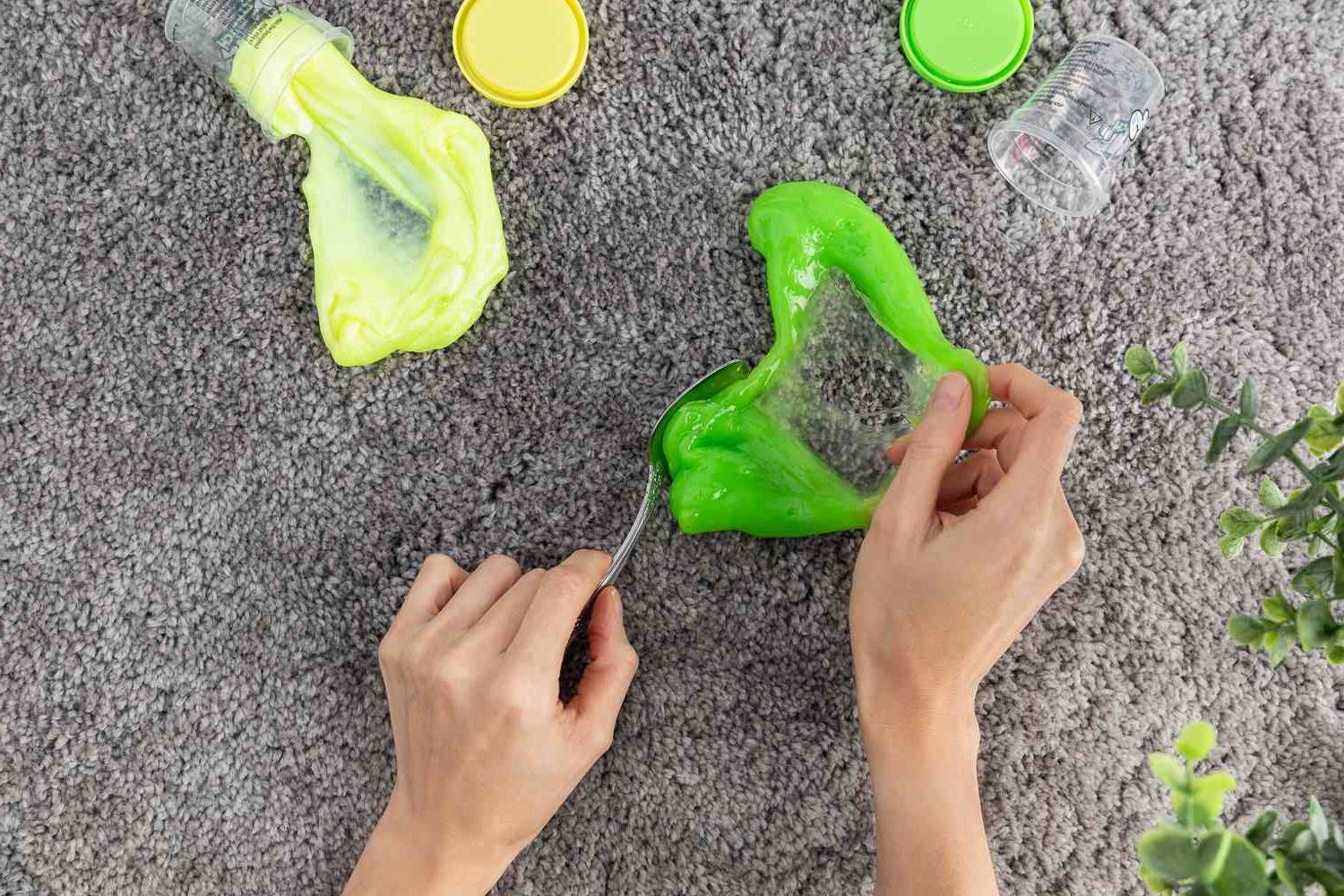Home>Home and Garden>Ultimate Guide To Sanitizing Carpets Without A Steam Cleaner
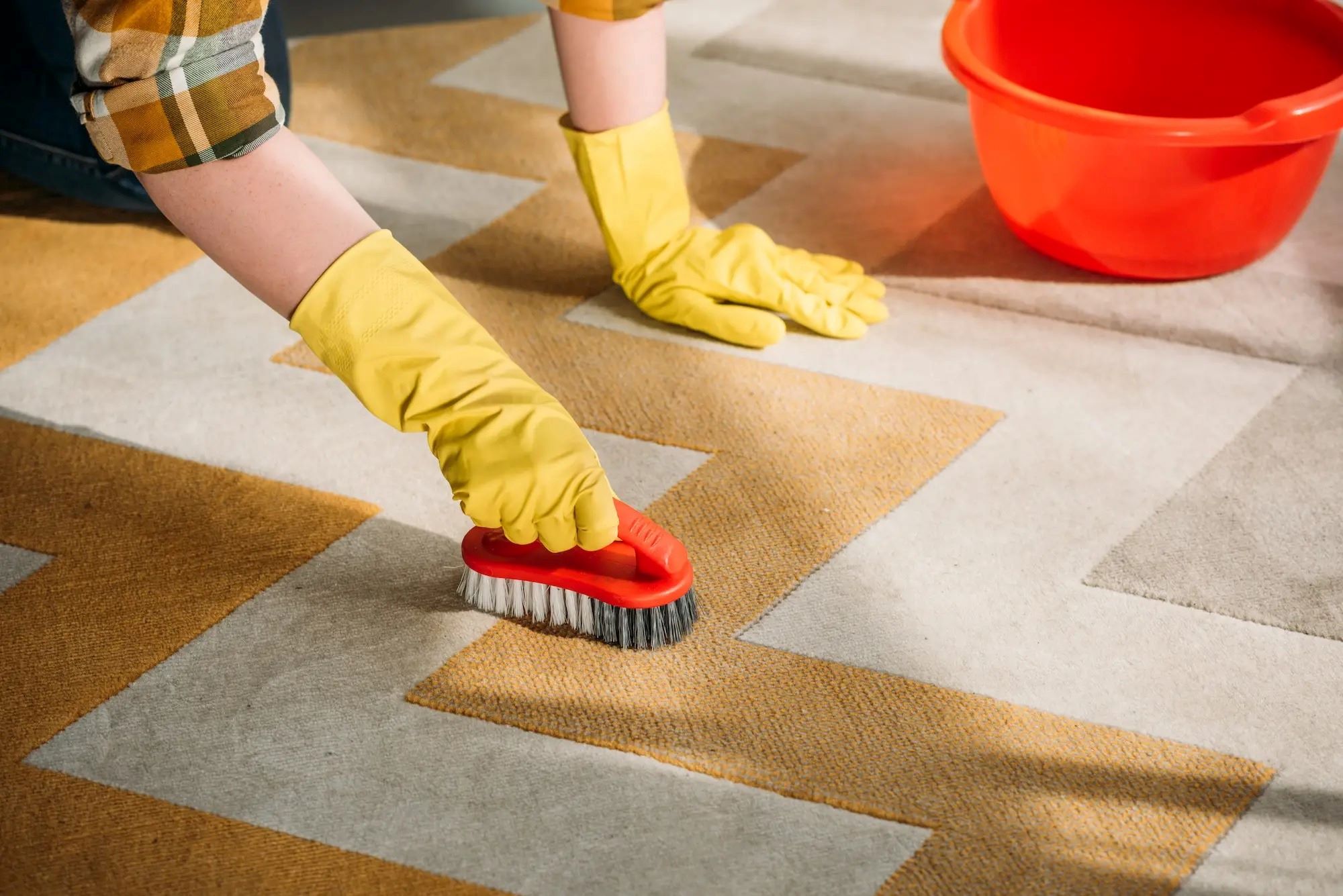

Home and Garden
Ultimate Guide To Sanitizing Carpets Without A Steam Cleaner
Published: January 7, 2024
Learn effective methods for sanitizing carpets without a steam cleaner in this comprehensive home and garden guide. Keep your carpets clean and fresh with these expert tips.
(Many of the links in this article redirect to a specific reviewed product. Your purchase of these products through affiliate links helps to generate commission for Noodls.com, at no extra cost. Learn more)
Table of Contents
- Introduction
- Why Sanitize Carpets Without a Steam Cleaner?
- Preparing Your Carpet for Sanitization
- Methods for Sanitizing Carpets Without a Steam Cleaner
- Using Baking Soda and Vinegar
- Using Hydrogen Peroxide
- Using Essential Oils
- Using Commercial Carpet Sanitizing Products
- Tips for Maintaining a Sanitized Carpet
- Conclusion
Introduction
Maintaining a clean and sanitized home environment is essential for the health and well-being of your family. Carpets, while adding warmth and comfort to a space, can also harbor dust, dirt, allergens, and even bacteria. Regular cleaning and sanitization of carpets are crucial to ensure a healthy indoor environment. While steam cleaners are commonly used for this purpose, there are alternative methods that can effectively sanitize carpets without the need for specialized equipment.
In this comprehensive guide, we will explore various techniques for sanitizing carpets without a steam cleaner. Whether you are seeking eco-friendly options, natural remedies, or commercially available products, this guide will provide you with the knowledge and insights to make informed decisions about the best approach for your specific needs.
By delving into the methods outlined in this guide, you will discover practical and effective ways to eliminate germs, odors, and stains from your carpets, ultimately creating a cleaner and healthier living space for you and your loved ones. Let's embark on this journey to explore the ultimate solutions for maintaining impeccably sanitized carpets without relying on a steam cleaner.
Why Sanitize Carpets Without a Steam Cleaner?
Sanitizing carpets without a steam cleaner offers a multitude of benefits that cater to various preferences and circumstances. While steam cleaning is a popular method for deep cleaning carpets, there are compelling reasons to explore alternative approaches.
-
Accessibility: Not everyone has easy access to a steam cleaner. The cost of purchasing or renting a steam cleaner, along with the need for storage space, may pose logistical challenges for some individuals. Therefore, alternative methods for carpet sanitization provide accessible options that do not require specialized equipment.
-
Environmental Considerations: Many individuals are increasingly conscious of the environmental impact of their cleaning practices. Traditional steam cleaners consume significant amounts of water and electricity, making them less environmentally friendly. Exploring alternative methods allows for more sustainable and eco-friendly carpet sanitization practices.
-
Chemical Sensitivities: Some individuals may have sensitivities to the cleaning agents or detergents commonly used in steam cleaning. Alternative methods often involve natural ingredients, such as baking soda, vinegar, or essential oils, which can be gentler and less likely to trigger allergic reactions.
-
Quick Spot Treatment: In some cases, the need for carpet sanitization may be limited to specific areas or localized stains. Alternative methods, such as using baking soda and vinegar, offer quick and targeted solutions for spot cleaning without the need to clean the entire carpet with a steam cleaner.
-
Versatility and Convenience: Alternative methods for carpet sanitization provide versatility and convenience. They can be easily implemented as part of regular cleaning routines, offering quick and effective solutions for maintaining a clean and sanitized carpet without the need to rely on heavy equipment.
By exploring the various reasons for sanitizing carpets without a steam cleaner, individuals can make informed decisions based on their specific needs, preferences, and circumstances. Whether it's accessibility, environmental considerations, chemical sensitivities, targeted spot treatments, or overall convenience, alternative methods offer practical and effective solutions for maintaining clean and sanitized carpets.
Preparing Your Carpet for Sanitization
Before embarking on the process of sanitizing your carpet, it's crucial to prepare the surface to ensure optimal results. Proper preparation not only enhances the effectiveness of the sanitization process but also contributes to the overall cleanliness and longevity of your carpet.
Vacuuming
Commence the preparation by thoroughly vacuuming the entire carpeted area. This initial step serves to remove loose dirt, dust, and debris from the surface and within the carpet fibers. Utilize a high-quality vacuum cleaner equipped with a beater bar or brush to agitate and loosen embedded particles. Pay special attention to areas with high foot traffic and ensure that all corners and edges are adequately vacuumed.
Spot Treatment
Address any visible stains or spills before proceeding with the sanitization process. Depending on the nature of the stains, consider using appropriate stain removers or spot treatment solutions. Blot the affected areas with a clean cloth to absorb excess moisture and prevent the stains from setting further. By treating specific spots beforehand, you can focus on overall sanitization without the distraction of localized blemishes.
Furniture Removal
If feasible, consider temporarily relocating any furniture or objects resting on the carpeted surface. By clearing the area of obstacles, you create unobstructed access for thorough sanitization. Additionally, this step allows for comprehensive cleaning of the entire carpet, including the often overlooked areas beneath furniture.
Testing for Colorfastness
Before applying any sanitizing agents or solutions, it's advisable to conduct a colorfastness test in an inconspicuous area of the carpet. Choose a small, discreet section and apply a small amount of the chosen cleaning solution. After a few minutes, blot the area with a clean white cloth. If the color remains unchanged, it indicates that the solution is safe for use on the carpet. This precautionary measure helps prevent potential damage or discoloration to the carpet fibers during the sanitization process.
Odor Elimination
If your carpet exhibits persistent odors, consider sprinkling baking soda over the entire surface and allowing it to sit for a few hours or overnight. Baking soda effectively absorbs and neutralizes unpleasant odors, preparing the carpet for subsequent sanitization.
By diligently preparing your carpet for sanitization through thorough vacuuming, spot treatment, furniture removal, colorfastness testing, and odor elimination, you set the stage for a successful and comprehensive cleaning process. These preparatory measures not only optimize the effectiveness of the sanitization methods but also contribute to the overall cleanliness and freshness of your carpeted space.
Methods for Sanitizing Carpets Without a Steam Cleaner
When it comes to sanitizing carpets without a steam cleaner, several effective methods offer practical and accessible solutions for maintaining a clean and germ-free carpeted environment. These methods are particularly beneficial for individuals seeking eco-friendly options, natural remedies, or quick spot treatments. Let's explore the diverse techniques for achieving impeccable carpet sanitization without the need for specialized equipment.
Using Baking Soda and Vinegar
The combination of baking soda and vinegar is a popular and eco-friendly approach to carpet sanitization. To begin, sprinkle a generous layer of baking soda over the entire carpet surface. Baking soda possesses exceptional odor-absorbing properties and is effective in lifting dirt and grime from carpet fibers. Allow the baking soda to sit for at least 15-30 minutes to maximize its deodorizing and cleansing effects.
Next, prepare a solution of equal parts water and white vinegar in a spray bottle. Lightly mist the carpet with the vinegar solution, targeting areas with noticeable stains or odors. The acidic nature of vinegar aids in lifting stains and eliminating odors, while also acting as a natural disinfectant. After applying the solution, gently blot the treated areas with a clean cloth to absorb excess moisture and residue.
Once the carpet has dried completely, thoroughly vacuum the treated area to remove any remaining baking soda and residual dirt. This method not only effectively sanitizes the carpet but also imparts a fresh and clean scent, leaving your carpet revitalized and free of germs and odors.
Using Hydrogen Peroxide
Hydrogen peroxide serves as a powerful and versatile cleaning agent, making it a valuable resource for carpet sanitization. Begin by diluting hydrogen peroxide with an equal amount of water to create a mild yet effective cleaning solution. Prior to application, conduct a patch test in an inconspicuous area of the carpet to ensure compatibility and prevent potential discoloration.
Once the solution is ready, apply it directly to stained or soiled areas of the carpet. The bubbling action of hydrogen peroxide aids in lifting stains and disinfecting the carpet fibers, effectively targeting germs and bacteria. After allowing the solution to sit for a brief period, gently blot the treated areas with a clean cloth to absorb excess moisture and residue.
Following the application of hydrogen peroxide, ensure proper ventilation and allow the carpet to air dry completely. Once dry, vacuum the carpet to remove any remaining debris and to fluff the fibers, resulting in a thoroughly sanitized and refreshed carpet.
Using Essential Oils
Essential oils not only offer pleasant and natural fragrances but also possess antimicrobial properties that can contribute to effective carpet sanitization. Create a customized carpet sanitizing solution by combining a few drops of essential oil, such as tea tree oil or lavender oil, with water in a spray bottle. Essential oils are known for their natural antibacterial and antifungal properties, making them ideal for eliminating germs and odors from carpets.
Lightly mist the diluted essential oil solution over the carpeted surface, focusing on areas with noticeable odors or microbial concerns. The aromatic essence of essential oils not only imparts a refreshing scent to the carpet but also aids in neutralizing bacteria and fungi, contributing to a cleaner and healthier indoor environment.
After applying the essential oil solution, allow the carpet to air dry naturally. The inherent properties of essential oils will continue to work as the carpet dries, leaving behind a sanitized and invigoratingly fragrant carpeted space.
Using Commercial Carpet Sanitizing Products
For those seeking convenient and targeted solutions, a wide range of commercial carpet sanitizing products are readily available in the market. These products encompass a variety of formulations, including foam, powder, and liquid sprays, each tailored to address specific cleaning and sanitization needs.
When selecting a commercial carpet sanitizing product, consider factors such as the type of stains, the presence of odors, and any specific carpet care requirements. Follow the manufacturer's instructions for application and usage, ensuring proper ventilation and adequate drying time for optimal results.
By leveraging the effectiveness of commercial carpet sanitizing products, individuals can achieve comprehensive and professional-grade sanitization without the need for a steam cleaner. These products offer convenience and efficacy, making them a practical choice for maintaining clean and germ-free carpets in residential and commercial settings.
Incorporating these diverse methods for sanitizing carpets without a steam cleaner provides individuals with a range of options to suit their preferences and specific cleaning needs. Whether opting for natural remedies, eco-friendly solutions, or commercially available products, these methods offer effective and accessible approaches to achieving impeccably sanitized carpets, contributing to a healthier and more hygienic indoor environment.
Using Baking Soda and Vinegar
The combination of baking soda and vinegar offers a natural and eco-friendly approach to effectively sanitize carpets without the use of a steam cleaner. This method not only eliminates germs and odors but also revitalizes the carpet, leaving it fresh and clean.
To begin, generously sprinkle baking soda over the entire carpet surface. Baking soda possesses exceptional odor-absorbing properties and is renowned for its ability to lift dirt and grime from carpet fibers. Allow the baking soda to sit for at least 15-30 minutes to maximize its deodorizing and cleansing effects.
Next, prepare a solution of equal parts water and white vinegar in a spray bottle. The acidic nature of vinegar makes it an effective natural disinfectant, aiding in lifting stains and eliminating odors. Lightly mist the carpet with the vinegar solution, targeting areas with noticeable stains or odors. The combined action of baking soda and vinegar works to sanitize the carpet while effectively neutralizing unpleasant odors.
After applying the solution, gently blot the treated areas with a clean cloth to absorb excess moisture and residue. This step helps to lift the dissolved dirt and grime from the carpet fibers, leaving the surface refreshed and sanitized.
Once the carpet has dried completely, thoroughly vacuum the treated area to remove any remaining baking soda and residual dirt. The end result is a revitalized carpet, free of germs and odors, with a fresh and clean scent.
By utilizing the powerful combination of baking soda and vinegar, individuals can achieve impeccable carpet sanitization without the need for specialized equipment. This method not only provides a natural and eco-friendly alternative to steam cleaning but also imparts a renewed freshness to the carpeted space, creating a healthier and more inviting indoor environment.
Using Hydrogen Peroxide
Hydrogen peroxide serves as a powerful and versatile cleaning agent, making it a valuable resource for carpet sanitization. This method offers an effective approach to eliminating germs and bacteria from carpets without the need for a steam cleaner.
To begin, dilute hydrogen peroxide with an equal amount of water to create a mild yet potent cleaning solution. This diluted solution effectively targets stains and soiled areas on the carpet, providing a thorough and targeted approach to sanitization.
Before application, it is advisable to conduct a patch test in an inconspicuous area of the carpet to ensure compatibility and prevent potential discoloration. This precautionary step helps to safeguard the carpet's integrity while ensuring optimal results.
Once the solution is ready, apply it directly to stained or soiled areas of the carpet. The bubbling action of hydrogen peroxide aids in lifting stains and disinfecting the carpet fibers, effectively targeting germs and bacteria embedded within the carpet.
After applying the hydrogen peroxide solution, allow it to sit for a brief period to maximize its cleaning and disinfecting effects. The solution works to break down and lift stubborn stains while effectively neutralizing germs and bacteria, contributing to a cleaner and healthier carpeted environment.
Following the application, gently blot the treated areas with a clean cloth to absorb excess moisture and residue. This step helps to lift the dissolved dirt and grime from the carpet fibers, further enhancing the sanitization process.
Proper ventilation is essential after applying hydrogen peroxide to the carpet. Allow the carpet to air dry completely, ensuring that the treated areas are thoroughly dried before resuming regular use of the carpeted space.
Once the carpet has dried, thoroughly vacuum the treated area to remove any remaining debris and to fluff the fibers, resulting in a thoroughly sanitized and refreshed carpet.
By leveraging the powerful cleaning properties of hydrogen peroxide, individuals can achieve comprehensive carpet sanitization without the need for a steam cleaner. This method provides a targeted and effective approach to eliminating germs and bacteria from carpets, contributing to a cleaner and healthier indoor environment.
Using Essential Oils
Utilizing essential oils for carpet sanitization offers a natural and aromatic approach to eliminating germs and odors without the use of a steam cleaner. Essential oils, derived from plants, possess inherent antimicrobial properties that make them valuable assets in maintaining a clean and healthy indoor environment.
To implement this method, begin by creating a customized carpet sanitizing solution. Combine a few drops of essential oil, such as tea tree oil or lavender oil, with water in a spray bottle. These essential oils are renowned for their natural antibacterial and antifungal properties, making them ideal for eliminating germs and odors from carpets.
Once the diluted essential oil solution is prepared, lightly mist it over the entire carpeted surface, focusing on areas with noticeable odors or microbial concerns. The aromatic essence of essential oils not only imparts a refreshing scent to the carpet but also aids in neutralizing bacteria and fungi, contributing to a cleaner and healthier indoor environment.
As the essential oil solution is applied, it permeates the carpet fibers, targeting germs and odors at their source. The natural antimicrobial properties of essential oils work to effectively neutralize and eliminate bacteria, fungi, and other potentially harmful microorganisms, thereby contributing to a sanitized and hygienic carpeted space.
After applying the essential oil solution, allow the carpet to air dry naturally. During the drying process, the inherent properties of essential oils continue to work, further enhancing the sanitization process. As a result, the carpet is left not only sanitized but also invigoratingly fragrant, creating a pleasant and welcoming atmosphere within the living space.
By incorporating essential oils into the carpet sanitization routine, individuals can achieve a natural and aromatic approach to maintaining impeccably clean and germ-free carpets. This method not only eliminates germs and odors but also imparts a refreshing and invigorating fragrance, contributing to a healthier and more pleasant indoor environment.
Using Commercial Carpet Sanitizing Products
For individuals seeking convenient and targeted solutions, commercial carpet sanitizing products offer a diverse range of formulations designed to address specific cleaning and sanitization needs. These products, available in various forms such as foam, powder, and liquid sprays, provide practical and effective alternatives to steam cleaning, catering to both residential and commercial settings.
Commercial carpet sanitizing products are formulated to target a wide array of carpet-related concerns, including stains, odors, and microbial contamination. These products often feature specialized ingredients and technologies that work to lift and remove stubborn stains, neutralize odors, and eliminate germs and bacteria embedded within the carpet fibers. By leveraging the efficacy of these products, individuals can achieve comprehensive and professional-grade sanitization without the need for a steam cleaner.
When selecting a commercial carpet sanitizing product, it is essential to consider factors such as the type of stains, the presence of odors, and any specific carpet care requirements. Different products are tailored to address specific cleaning needs, providing targeted solutions for common carpet-related challenges. Whether dealing with pet stains, food spills, or general soiling, there are commercial products designed to effectively tackle these issues, restoring the cleanliness and freshness of the carpeted space.
The application of commercial carpet sanitizing products is typically straightforward, following the manufacturer's instructions for optimal results. Depending on the formulation, the product may be applied directly to the carpet surface, worked into the fibers, and then left to dry. Some products may require a dwell time to effectively lift stains and eliminate odors, while others may offer quick-drying properties for added convenience.
Proper ventilation and adequate drying time are crucial after the application of commercial carpet sanitizing products. This ensures that the treated areas are thoroughly dried, allowing the product to work its magic in lifting stains, neutralizing odors, and eliminating germs and bacteria. Once the carpet has dried, vacuuming the treated area helps to remove any remaining residues and debris, leaving behind a revitalized and sanitized carpet.
By leveraging the effectiveness of commercial carpet sanitizing products, individuals can achieve comprehensive and targeted solutions for maintaining clean and germ-free carpets. These products offer convenience, efficacy, and versatility, making them a practical choice for addressing a wide range of carpet-related cleaning and sanitization needs.
Incorporating commercial carpet sanitizing products into the cleaning routine provides individuals with accessible and effective alternatives to steam cleaning, contributing to a healthier and more hygienic indoor environment.
Tips for Maintaining a Sanitized Carpet
Maintaining a sanitized carpet is essential for preserving a clean and healthy indoor environment. Once the carpet has been effectively sanitized, implementing proactive measures to uphold its cleanliness and freshness becomes crucial. Here are valuable tips for sustaining a sanitized carpet:
-
Regular Vacuuming: Establish a consistent vacuuming routine to remove surface dirt, dust, and debris. Focus on high-traffic areas and ensure thorough coverage of the entire carpeted space. Frequent vacuuming prevents the accumulation of particles that can compromise the carpet's cleanliness.
-
Prompt Spot Treatment: Address spills and stains as soon as they occur to prevent them from setting into the carpet fibers. Utilize appropriate stain removers or spot treatment solutions to effectively lift and remove blemishes, maintaining the carpet's pristine appearance.
-
Use Doormats and Shoe Removal: Place doormats at entry points to minimize the tracking of dirt and outdoor contaminants onto the carpet. Encourage household members and guests to remove their shoes before walking on the carpet, reducing the introduction of external debris.
-
Professional Cleaning: Schedule periodic professional carpet cleaning to complement regular maintenance. Professional cleaning services can provide deep extraction of embedded dirt and grime, extending the carpet's lifespan and ensuring thorough sanitization.
-
Implement Area Rugs: Strategically place area rugs in high-traffic zones or areas prone to spills to offer an additional layer of protection for the underlying carpet. Area rugs can be easily cleaned and maintained, minimizing wear and tear on the primary carpet surface.
-
Regular Rotation of Furniture: Periodically rearrange furniture placement to equalize wear and exposure across the carpeted area. This practice prevents uneven fading and minimizes the formation of indentations from prolonged furniture placement.
-
Air Circulation and Sunlight: Promote air circulation and natural sunlight exposure in the carpeted space to deter the growth of mold and mildew. Opening windows and using fans can help maintain a well-ventilated environment, contributing to the overall cleanliness of the carpet.
-
Use Carpet Protectors: Consider applying carpet protectors or sealants to guard against spills and stains. These products form a protective barrier, making it easier to clean and maintain the carpet while extending its longevity.
By incorporating these tips into your carpet maintenance regimen, you can uphold the cleanliness and sanitation achieved through the sanitization process. These proactive measures not only preserve the carpet's appearance but also contribute to a healthier and more hygienic living environment for you and your family.
Conclusion
In conclusion, maintaining impeccably sanitized carpets without the use of a steam cleaner is not only achievable but also offers a range of benefits and practical solutions. The methods outlined in this guide provide accessible, eco-friendly, and effective alternatives to traditional steam cleaning, catering to diverse preferences and cleaning needs.
By exploring the use of natural ingredients such as baking soda, vinegar, hydrogen peroxide, and essential oils, individuals can harness the power of these readily available resources to eliminate germs, neutralize odors, and revitalize their carpets. These methods not only contribute to a cleaner and healthier indoor environment but also align with environmentally conscious cleaning practices.
Furthermore, the availability of commercial carpet sanitizing products offers convenience and targeted solutions for addressing specific cleaning needs, providing professional-grade results without the reliance on specialized equipment.
The preparatory measures, including thorough vacuuming, spot treatment, furniture removal, colorfastness testing, and odor elimination, play a crucial role in optimizing the effectiveness of the sanitization methods. These preparatory steps set the stage for successful carpet sanitization, ensuring thorough and comprehensive cleaning outcomes.
Additionally, the tips for maintaining a sanitized carpet serve as proactive measures to uphold the cleanliness and freshness of the carpeted space. By integrating regular vacuuming, prompt spot treatment, professional cleaning, and other preventive practices, individuals can prolong the effects of the sanitization process and preserve the pristine condition of their carpets.
Ultimately, the journey to sanitizing carpets without a steam cleaner empowers individuals to make informed decisions based on their specific needs, preferences, and environmental considerations. Whether opting for natural remedies, commercial products, or a combination of approaches, the result is a cleaner, healthier, and more inviting indoor environment.
By embracing the diverse methods and tips presented in this guide, individuals can achieve and maintain impeccably sanitized carpets, ensuring a hygienic and comfortable living space for themselves and their families.
